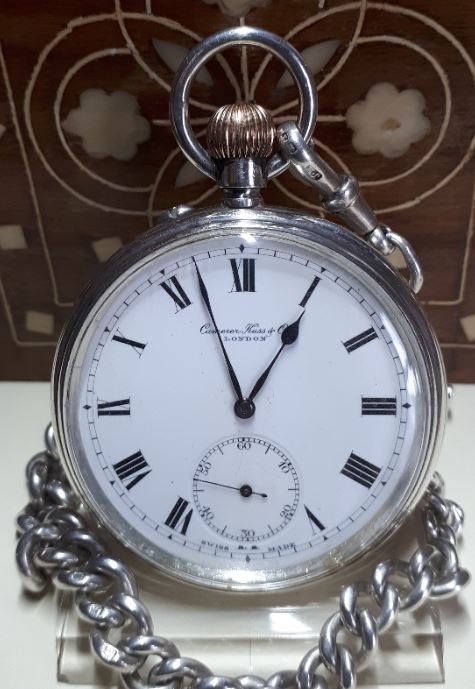Last updated on May 24, 2024
Unfortunately, it is inevitable that most enamel antique pocket watch or trench watch dials will develop hairline cracks over time. Initially, these may be barely visible. However, these cracks expose a slightly rougher surface that dust, lubricants and other contaminants can adhere to over the decades. The end result is that as the contaminants accumulate over time, the hairline cracks become more obvious and affect the aesthetics of the watch. This reduces the appeal and charm of the watch and ultimately affects its value. A certain amount of ageing is considered patina, which is different to damage. Fortunately, there is a safe and easy technique for cleaning enamel dials that can, in most cases, make these hairline cracks less visible.
Do not use this cleaning technique on painted or metal dials, it can cause serious, irreversible damage to these types of dials. This includes enamel paint, which may have been applied to the dial by the retailers as a cost-cutting method. Enamel paint remains on the dial surface. It can usually be easily distinguished from the fired numbers by looking across the dial with a loupe. The enamel paint will be clearly seen standing above the surface of the dial. This technique is only suitable for fired vitreous enamel dials. If in any doubt, always consult a professional watchmaker.
Vitreous enamel
The type of enamel used for watch dials is vitreous enamel, which is made from powdered glass. Vitreous enamel dials have a hard surface which is typically slightly reflective and shiny like glass. However, it can be made less reflective by rubbing with an abrasive after firing. Tin oxide is added to the enamel to give it an opaque white colour.
To make a watch dial, the enamel is fused onto a metal dial plate. This is done by firing in an oven at high temperatures. The extreme heat melts the glass and causes it to form a smooth glassy surface over the metal plate. The enamel will be applied to both sides of the dial to ensure that it maintains consistent tension. Initially, the overall white or black background is laid. However, this might take several rounds of firing and smoothing to get the desired finish. Next, the numbers, minute and second markers are drawn on the dial using enamel ink. This is then fired, at a lower temperature, to fix it to the background.
Cleaning solution
In order to clean antique enamel pocket watch dials, you do not need to buy an expensive commercial dial cleaning solution. There is a low-cost cleaning substance available in pharmacies and most supermarkets, which is denture cleaning tablets. These come in the form of effervescent tablets that dissolve in water to produce an alkaline peroxide solution. There are some fast-acting varieties, but most of the online community seems to be using denture cleaners of the overnight variety, which I assume is a milder version. There is no point in trying to rush a solution in 3 – 5 minutes. Why take the risk? Be patient and use the milder solution, otherwise ensure that you don’t exceed the timeframe listed on the packet.
Process
You will need a glass jar, large enough to contain the dial and a method of suspending the dial in the solution. A piece of wire or some fishing line and a stick or rod of some type will suffice. The dial should be suspended face-down so that dirt that is loosened will sink to the bottom of the jar. The jar should be filled with enough water to completely cover the dial when suspended. It is important that the water you use is at room temperature. Hot or cold water may cause the dial to expand or contract to create even more hairline cracks. Ideally, fill the jar and leave it to sit for several hours to settle at room temperature.
Next, suspend the dial in the water so that the dial is completely submerged. The dial should be face-down. Drop in the denture-cleaning tablet and leave it to do its work. Ideally, retrieve the dial hourly to check the progress of the cleaning. As mentioned previously, do not exceed the timeframe listed on the packet. Once satisfied with the clean, remove the dial and rinse it in room temperature water and dry it thoroughly. The dial should look clean and the hairline cracks will be far less obvious. The denture-cleaning tablet obviously doesn’t fill and repair hairline cracks, but it does help to conceal them.
A list of additional posts regarding antique watches can be found on the Guides page.

